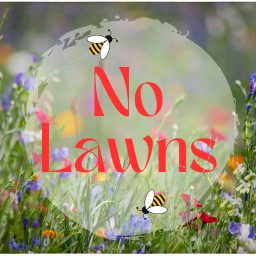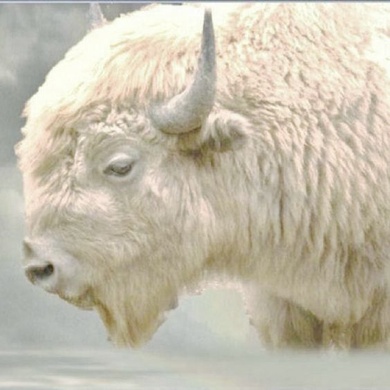I’m in the Piedmont (South-east US) region with a hardiness zone of 8a. I have a large area of turf grass, and I want to plant native plants, attract butterflies, native insects, fireflies, all of it. I’m looking for trees, shrubs, small plants, anything would be nice to plant.
Where do I start? I see a lot of different species online, but where can I get seeds for them to plant? Is planting from seeds a viable option for a beginner?
Any help would be appreciated!
I’m also 8a in the piedmont.
For seeds check out sow true seeds from asheville. They take online orders and will ship. Planting from seed is doable, but note that a lot of native pollinator friendly plants should be planted in the fall. Ideally you would get deep plug trays for starting native perennials, but they can be spendy/hard to find.
The university of north carolina charlotte botanical gardens holds a spring and fall plant sale that is a great opportunity to get some harder to find stock. They aren’t exclusively native plants, but they habe a better variety of natives than any nursery I’ve been to.
Things that I’ve had good luck with and pollinators love: Native perennial: coneflower, butterfly bush, milkweed, black eyed susan, high bush and rabitteye blueberry bushes, passionfruit, raspberry, common daisy, a variety of asters(these bloom when everything else is dying off in the fall and are absolutely covered in pollinators), phlox, mountain laurel(very sensitive to site selection), red bud, blazing star (liatrus), plum, strawberry, holly, mock-orange, some types of hydrangea, clover, dead nettle, magnolia, joe pye weed, meadow rue
Non-native: hibiscus, sweet chestnut(I see so many pollinators on the chestnut catkins and the deer love the nuts, but the burrs are crazy sharp and the catkins smell… funky. Still one of our favorite trees.), rosemary, roses, chaste tree, lilac, japanese pussy willow
Things that do well that I love, but I don’t see loads of pollinators on: azalea, camellia sasanqua (great for oct-dec blossomss), camelia japonica(dec-march blossoms), pieris (can be a little finnicky to get established), daffodils, tulips, gladiolus, crocus, saffron crocus, gardenia, dahlia, asiatic lillies, daylillies, iris, bluebells, helleborus, calla lilly, forsythia, peach, hals hardy almond, rhododendron (some are native, but I think most varieties in nurseries are not), yoshino and kwanzan cherry, myrtle, hosta, bottlebrush, fig, rose of sharon
Things I try and fail to elliminate, please never plant them: english ivy, wax leaf privet, english privet, tree of heaven, mimosa, japanese honeysuckle, periwinkle, autumn olive
I tend to focus on perrenials, but when you’re starting out, don’t be afraid to buy cheap trays of annuals. They fill in space quickly and can bring a lot of life to an area that would take a long time for perennials to fill in.
Don’t trust my labels on what is native or not. They aren’t well researched.
At the risk of rambling, I’ll share a few hard earned lessons about getting started.
Lesson 1: clay turns to concrete when it dries. I broke the handles off two shovels within the first month of us buying our house. I now have an excessively heavy steel handled shovel, and I’ve learned that planting should not be done during our summers. If it’s at all dry when you are going to work an area, watering it ahead of time will make working the soil much easier. Oh, and any tool that is meant to work the ground should be kept very sharp. Shovels are so much easier to use when freshly sharpened.
Lesson 2: plant in the fall. Most perennials will do much better planted in the fall. Even some garden veggies like radishes, carrots, leeks, and brassicas will do better growing slowly in our winter months. Save spring planting for tender annuals. Our spring gets hot so fast that foliage will outpace root growth if you plant in the spring and you’ll struggle to keep things watered without overwatering.
Pace yourself: I’m terrible at this and wanted to plant everything everywhere all at once. Pick one area to do thoroughly rather than scattered plantings. Plan out a planting bed with a defined border. Plant short stuff near the edge, then clumps of medium height, and tall bushy stuff in the back. Plant like kind plants in clusters, not lines. Lines beg to be constantly pruned or they look messy.
Lack of site prep will come back to haunt you: get a good scuffle hoe and keep your intended planting area clear of growth for a few weeks before planting. Hoeing is so much faster and easier when you don’t have to meticulously navigate around your tender plantings. Sheet mulching is a good idea. Rather than scavenging cardboard, I prefer to use rolls of brown kraft paper. You can find big rolls from paint stores/lowes for cheap. Put down a couple layers of paper then mulch on top. The paper will act like a temporary weed barrier but will break down within a year. The paper is easy to puncture.
A lot of advice you see online is great for the northeast or northwest. Things labeled as full sun might just wither in the heat of our climate. The more you can design your garden to let in morning light, and shade out harsh afternoon light, the easier time you’ll have getting more sensitive plants established. If you can, put your tallest plantings on the western side. Planting timelines you see online might be wildly different from what’s best in the piedmont. For example, radishes will bolt and flower in the heat before growing a big bulb if you plant them in the spring. 8a is awkward in that you can’t garden like tropical areas, but a surprising amount of plants will make it through the winter. The deep summer is sometimes more dormant than the winter months.
My SO and I like to sketch out plans on tracing paper over top printouts of our property survey. Things change in practice, but it’s good to start with an idea of where you want paths and garden beds to be.
Thank you for the detailed answer, I especially appreciate your list of species that have worked well. We also have a big population of deer and bunnies in our area that love to eat things in the backyard. Which plants should I plant that can protect against deer? Are there any methods (netting?) that you’ve found effective with deer?
Seeds are a good idea but I’ve had a lot better results starting them inside. I start them a week or two ahead of when they would start shooting up outside naturally.
I use a big tray with decent drainage, I moisten the soil first so it’s an even moist through the whole thing, put down a layer of seeds on top, put a little bit of most soil over them, just enough to cover them, I put some plastic wrap or a plastic bag over it with some air holes, and let it sit somewhere warm with no direct sunlight for a week. I personally use a seed mat but I know people who put them on top of their fridge or other places that stay a little above 70°
As soon as they germinate you don’t NEED the plastic wrap but you can keep it a little longer to keep the soil moist if you want. Once they’re an inch or two tall, I divide it all up (if I’m not using a divided tray already) and go plant them in the garden.
This method works with just about anything you wanna plant. It helps to get things started and established inside where it’s a controlled environment.
I wouldn’t plant from a seed, especially a tree or shrub.
Check to see if your state as a native plant society or you can start here: https://www.audubon.org/native-plants
I, personally, haven’t had much luck direct-sowing natives. I always get extremely low germination rates, then pests or weather kill the ones that do survive. Perhaps I’m buying old seeds or not buying/sowing enough. The only things I get good results from direct-sowing are annual vegetables.
What I’ve been doing for the past couple years is picking up truckloads of mulch or getting ChipDrops (I’ve waited months for ChipDrops, and when a request expires, I raise my donation amount), then sheet-mulching an area (cardboard or paper paint drop-cloth), and covering with 4"+ of chips or mulch. I then go to a local nursury, ask what plants may do well in a particular area (full dry shade, part shade, deer resistant, etc), and pick up a variety of plants. I only pick up 1 or 2 plants of a species/variety, because plants are expensive, and I want to see if they survive before investing in more. I then dig a hole in the mulch, stab holes in the sheet mulch, dump purchased soil into the holes, then plant the plants into them.
I’ve just started collecting seeds from some of my plants, and I should be able to divide some of my plants or try to root cuttings soon. Hoping I can avoid spending shitloads of money by just propagating what I have to fill all the mulched areas out.
Ooh thank you for the advice about ChipDrops, it sounds really cool! Their website suggests that the deliveries can be very large (https://support.getchipdrop.com/article/6-can-i-get-a-smaller-load). Are they really this big often? How would you recommend handling it if the load is that big?
Both times I’ve received ChipDrops, the loads were an entire dump truck; ~20 cubic yards. I just used a wheelbarrow, a many-tined pitchfork, and a garden rake to make multiple large mulched beds, and a small pile in my back yard. I now have multiple large mulched beds, use it to cover food scraps in my compost bin, and use some in my vegetable beds/paths. It’s about a full day’s work to handle it all. I think ChipDrop also allows people to notify other users you’re giving some away if you can’t use it all, or you could try something like Craigslist.
Some fantastic advice here already, but I want to emphasize a few points:
Start small, especially if you have a big property. Changing the entire landscape will be a process, so start with a small area that you can actively maintain and then expand from there. Once your plants are established, they will take much less maintenance than when they’re first getting going.
Starting from seed can be an easy way to propagate uncommon plants you find around you (and a great way to preserve local genetics for native species), and it can be very fun and rewarding, but it’s not necessarily the easiest way to start. I might try a mix of strategies to see what works best for you. Try starting a few things from seed, and also buying a few perennials in pots from local nurseries. Keep in mind that a lot of plant seeds won’t survive desiccation the way domesticated crop seeds do. You can find propagation information online that is specific to the species you want to grow.
If you do plant any trees, make sure to place them thoughtfully relative to permanent infrastructure like sidewalks, structures, or pipes. But If you have space for them, larger trees are exponentially more valuable for urban wildlife/biodiversity than smaller ones. And they don’t need as much room at ground level as many people think. In general, oaks are probably a keystone species in most of the Eastern US, and there are many species, so there should be one for almost every environment. I’m an arborist, so let me know if you need more specific advice on the tree stuff!



